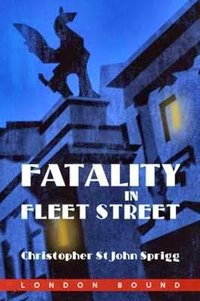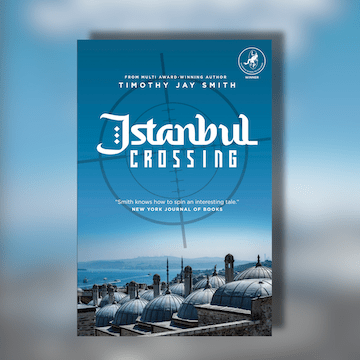Fatality in Fleet Street was first published in 1933, but is set several years later, on the eve of what history tells us was World War II. The supreme irony is that St John Sprigg could have predicted neither this nor his own untimely death on 12 February 1937, the first day of the Battle of the Jarama Valley. He was an avowed Marxist and, like many others, was drawn like a moth to the flame of the Spanish Civil War.
Lord Carpenter is a press baron of truly Maxwellian ego, temper and mania. The flagship of his empire is the mass circulation Mercury. Carpenter is convinced that Britain is threatened by a resurgent Russia, and he plans to use his paper to stir up a tornado of hatred which will compel the government – led by the widely respected but ailing Claude Sanger – to go to war. He has news of a terrible massacre of British officials which he will rouse the anger of his millions of readers, and forces Sanger to act. On the eve of publication of this inflammatory story, Carpenter is found dead at his desk. He’s been stabbed through the heart with an ornamental dagger. There are numerous suspects – mostly staff writers of The Mercury, including the urbane and monocle-twirling crime editor, Charles Venables.
The prose is elegant, and beautifully stylish, but is as distant from 21st century writing as it is from Chaucer. At first, the conversational exchanges seem impossible, archaic and self-aware, but remember the publication date. This was the year of Tender Is The Night, Lord Edgware Dies, Murder Must Advertise, Down And Out in Paris and London, and Testament of Youth. Readers would be expected to understand – and appreciate – the frequent classical, cultural and literary references sprinkled liberally throughout the text. Editors love genres, pigeon-holes and, in this digital age, tags. This is not an easy book to categorise. It is part political satire, part (un)locked room mystery, part courtroom drama, and also has a very chaste and restrained romance tinkling away in the background like a distant fountain.
The title is included in the publisher’s London Bound series. Yes, it is obviously set in London, but there is very little of London in the book. There are no trams, taxis, fogs, atmospheric railway stations, and very few cheeky cockney ‘sparrers’. It is curiously claustrophobic, and could almost be a three act stage play, with a couple of simple sets and a few doors.
The weakness of the book is that today’s casual reader may dismiss it as a minor work of crime fiction which, in its day, was rightly cast into gloom by the giant shadows of Sayers, Christie and Allingham. It does take work, it does take empathy, and it does take perseverance to get the best from Fatality in Fleet Street, but it is well worth the effort, and Oleander is to be applauded for the enterprise. The hunt for Carpenter’s killer has an ingenious and unusual solution, and the author keeps us waiting until literally the final paragraph to learn the murderer’s identity. So, turn off the television, have a valve radio murmuring softly in the background, give your monocle an elegant twirl and enjoy a thoroughly engaging period piece.
Oleander Press
Print/Kindle
£6.95
CFL Rating 4 Stars











